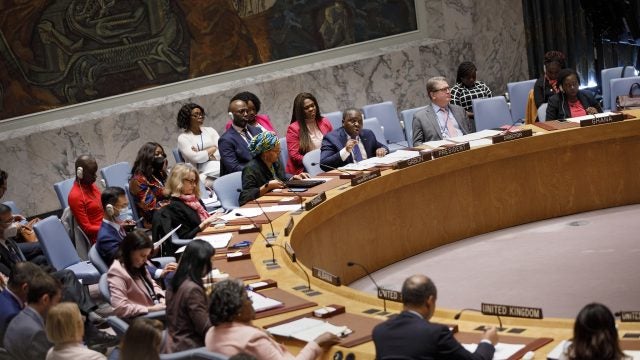
Title: A Flexible Strategic Blueprint for the Korean Peninsula
Last month, I wrote that the Republic of Korea’s (ROK) recent militarization attempts cannot be sustained due to budgetary and institutional limitations, its inability to achieve strategic parity with its neighbors, and the domestic zeitgeist that is vehemently opposed to militarization attempts by the central government. Notwithstanding the rosy statement by the US government that the effort to transfer the wartime Operational Control (OPCON) to the ROK military “is on schedule,” North Korea’s latest nuclear testing casts doubts on such premature assessments.
Given the budget constraints and Kim Jŏng-ŭn’s frequent, erratic actions, any policy choices the United States makes will be fraught with difficulties. Nevertheless, a combination of diplomatic recognition of the Democratic People’s Republic of Korea (DPRK) in tandem with consistent and unified policy framework within the US-ROK alliance may offset the threats posed by Kim Jŏng-ŭn.
With this in mind, both the United States and the ROK should consider extending the olive branch to the DPRK through normalization. Despite inherent obstacles, recognizing the DPRK as a sovereign state is desirable since it may avert a costly war between the two Koreas and would lessen the economic burden on South Korea. Further, the United States may successfully wean Kim Jŏng-ŭn away from China and hold him more accountable to international norms.
It must be understood, however, that riding the North Korean beast is still a risky endeavor. Flexibility entails carefully balancing the carrots with sticks to ensure that the US-ROK alliance enjoys a full range of available options. To that end, both the ROK and the United States must “forge a unified policy approach.”
The single most important factor in the flexible approaches towards the DPRK is the issue of OPCON transfer scheduled for 2015. Despite the Obama administration’s assurance that it “will maintain a robust defense posture, backed by…[a] commitment of extended deterrence, including the U.S. nuclear umbrella,” curiously absent in the 2009 Joint Vision are specific guidelines or steps to ensure that the ROK “will take the lead role in the combined defense of Korea.” The ROK military still remains plagued by interoperability issues, budget constraints, and interservice rivalries which hamper coherent military responses against North Korean threats. Further, America’s decision to proceed with the OPCON transfer as scheduled is “dangerously myopic” as it ignores “the asymmetric challenges that [North Korea] presents.”
While the Roh Moo-hyun administration (2003-2008) and many ROK citizens viewed the issue of American OPCON over the ROK forces as an infringement upon ROK’s sovereignty, eventually “all South Korean enthusiasm for OPCON transition ceased, even among ROK sovereignty supporters.” One possibility for the change in attitude may be the “direct comparison of the ROK military to the DPRK military.” South Korean citizens showed “strong support for the U.S.-ROK security alliance in the 80-90 percent range.” The persistent anxiety among South Korean citizens over their own physical security in the aftermath of the DPRK provocations in 2011 may help to explain the ROK’s growing reluctance to assume OPCON at this juncture.
In short, America’s exercise of wartime OPCON over the ROK military helps to deter further acts of aggression by threatening Kim Jŏng-ŭn’s “regime control.” To his credit, Lee Myung-bak implemented a series of deliberate, measured responses in the immediate aftermath of such provocations by the DPRK, but these measures alone may prove insufficient to prevent, let alone, deter further DPRK provocations.
Recent events have shown that “strategic patience” has “run its course.” What is needed is a flexible strategic blueprint that reflects the geopolitical realities in the region. I do not believe that Kim Jŏng-ŭn will continue to pose existential threats to the US-ROK alliance. Nor do I believe, as some of my ROK military officer friends do, that we should launch a pre-emptive strike against the DPRK. However, until Kim Jŏng-ŭn becomes a responsible actor on the world stage, he will remain refractory. For this reason, both the United States and the ROK should consider delaying the OPCON transfer, lest Kim Jŏng-ŭn construe the transition as dissolution of the extant alliance or as evidence of diminishing American resolve and strength in Northeast Asia.
The aforementioned dual approaches are not contradictory policies, but flexible, and deliberate measures informed by pragmatic concerns. Adroitly balancing the sticks with carrots may induce the DPRK to join the global community as a responsible participant while also successfully deterring further provocations by the DPRK.
Image Credit: Stefan Krasowski, CC BY 2.0 <https://creativecommons.org/licenses/by/2.0>, via Wikimedia Commons
This is an archived article. While every effort is made to conserve hyperlinks and information, GJIA’s archived content sources online content between 2011 – 2019 which may no longer be accessible or correct.
More News

This article explores the uncertain future of Arctic governance amid shifting global geopolitics. It argues that whether Washington and Moscow opt for confrontation or cooperation, multilateralism in the Arctic…

Twenty-five years ago, the United Nations Security Council adopted Resolution 1325, establishing a framework that underpins the Women, Peace, and Security (WPS) Agenda. The Resolution recognized both the…

When we analyze conflicts in the Middle East, we are not analyzing conflicts with isolated impacts but risks for global energy security. Recent conflicts in the Middle East have highlighted…